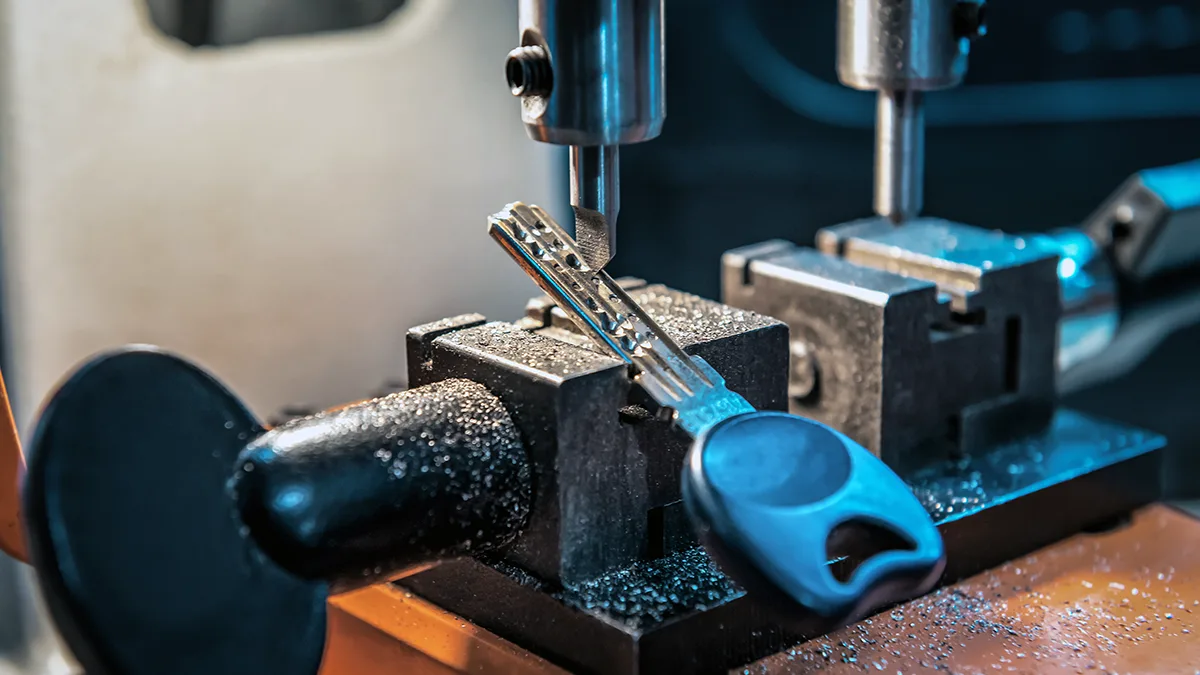Key Cutting in London: When You Need It and Where to Go Whether you've just…
Understanding BS3621 Locks: Your Essential Guide to British Standard Security
When it comes to safeguarding your property, understanding the nuances of security measures is paramount.
One of the most trusted standards in the UK is the BS3621 lock, a benchmark for high-security locks that meet rigorous British Standards.
Recognising these locks and ensuring you have them installed can significantly enhance the security of your residential or commercial property.
In this guide, we will demystify BS3621 locks, help you identify if your current locks meet this standard, and illustrate why choosing a reputable locksmith service is essential for your peace of mind.
What are BS3621 Locks?
Key Features of BS3621 Locks
BS3621 locks are designed to offer superior protection against unauthorised entry.
One of the defining features is the key-operated lock mechanism, which requires a key to lock and unlock from both sides.
This ensures that the lock cannot be easily bypassed by manipulating the internal mechanism.
Additionally, BS3621 locks are equipped with anti-pick, anti-drill, and anti-saw protections, making them resistant to common burglary techniques.
These locks also include a deadbolt feature, which extends deep into the door frame, providing a robust barrier against forced entry.
The locks are thoroughly tested to withstand harsh environmental conditions, ensuring durability and long-term reliability.
Lastly, BS3621 locks must display the British Standard Kitemark, indicating compliance with rigorous performance criteria.
This combination of features makes BS3621 locks an excellent choice for both residential and commercial properties seeking enhanced security.
Benefits of BS3621 Compliance
Compliance with BS3621 standards offers numerous advantages for property owners.
Firstly, many insurance companies require BS3621 locks as a condition for coverage.
Having these locks installed can lower your premiums and ensure you meet your policy requirements.
Secondly, BS3621 locks provide peace of mind due to their robust construction and resistance to common burglary methods.
This level of security is particularly beneficial for properties in high-risk areas.
Additionally, the presence of a BS3621 lock can add value to your property.
Potential buyers and tenants often look for properties with high-security features, making your property more attractive in the market.
Lastly, having BS3621 locks can contribute to overall neighbourhood safety.
When more properties in an area are secured with high-standard locks, the likelihood of crime can decrease, fostering a safer community for everyone.
Identifying British Standard Locks
Checking for the BS Kitemark
To ensure your locks meet BS3621 standards, the most straightforward method is to check for the British Standard Kitemark.
This hallmark of quality is typically found on the faceplate of the lock, near the keyhole.
The Kitemark is a symbol of compliance, indicating that the lock has undergone rigorous testing for security and durability.
Look for a logo that resembles a heart shape enclosing the letters “BSI” along with the standard number “BS3621” inscribed nearby.
This mark is not only a sign of quality but also a requirement for many insurance policies. If your lock does not display this mark, it may not meet the necessary security standards.
Additionally, it’s worth consulting with a reputable locksmith who can verify the lock’s compliance.
They can provide expert advice and, if needed, recommend suitable BS3621-compliant locks to upgrade your property’s security.
Recognising the Lock Characteristics
Recognising the distinct characteristics of BS3621 locks can help you identify whether your current locks meet this high-security standard.
One of the primary features is the five-lever mechanism found within the lock.
This mechanism offers greater resistance to picking and drilling, making it a robust choice for security.
Additionally, BS3621 locks typically include a deadbolt that extends at least 20mm into the door frame when engaged.
This deep-set bolt provides substantial resistance against forced entry attempts.
Another key characteristic is the need for a key to lock and unlock the door from both sides, enhancing security by preventing unauthorised manipulation.
Moreover, BS3621 locks often come with anti-saw pins and hardened steel plates to resist sawing and drilling attacks.
By familiarising yourself with these features, you can better assess the security level of your existing locks and make informed decisions about potential upgrades.




Comments (0)